Australian Tropical Rainforest Plants - Online edition
Calamus caryotoides A.Cunn. ex Mart.

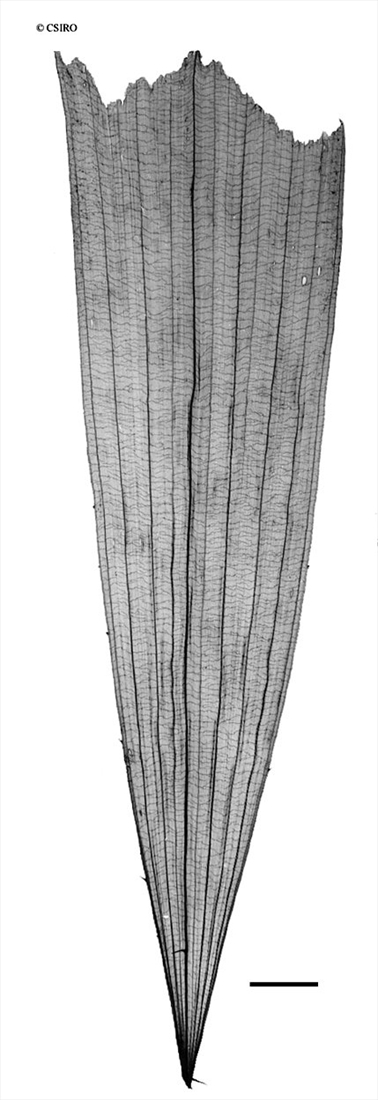
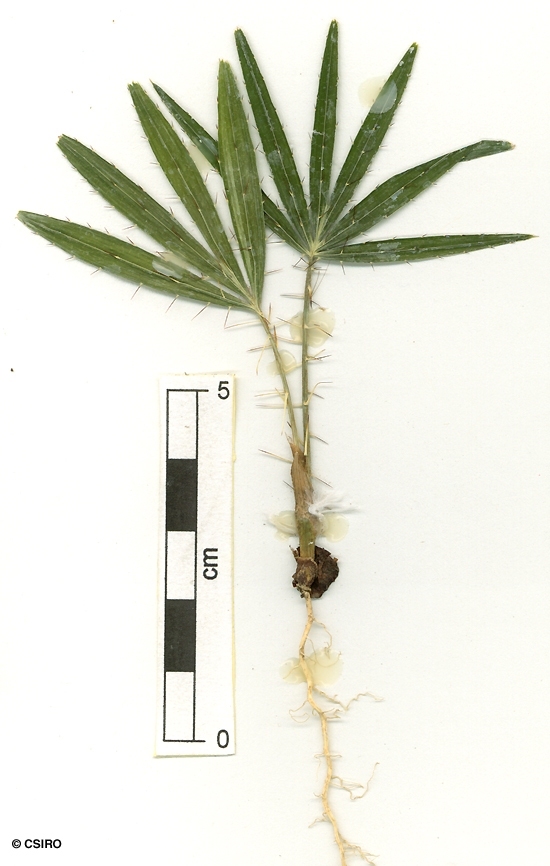
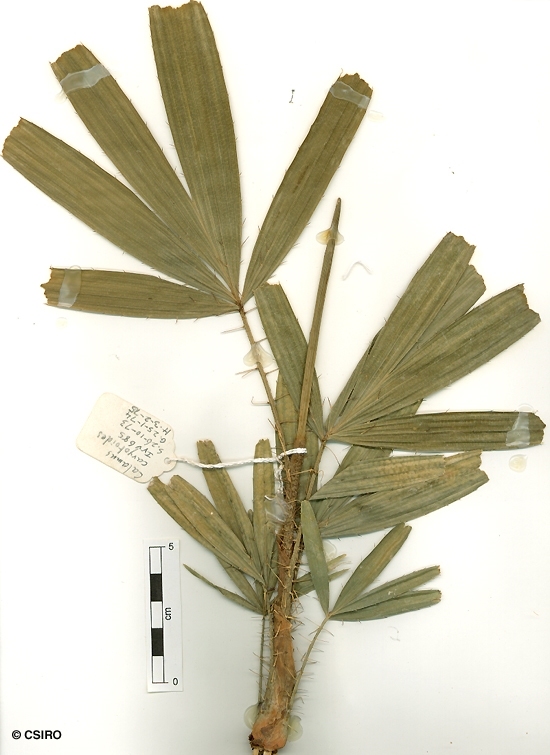
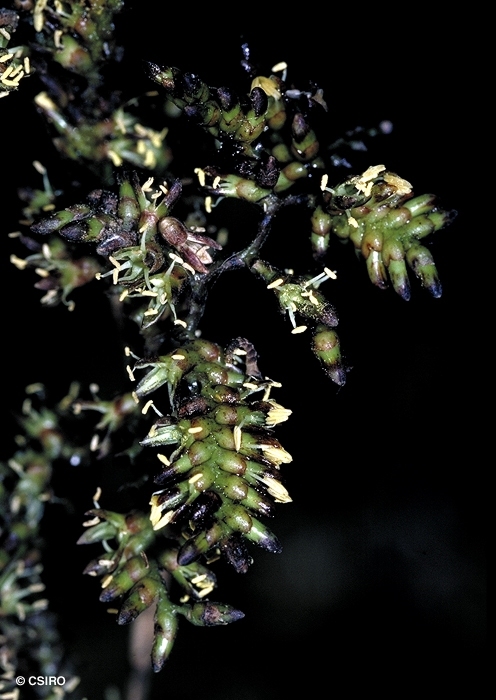

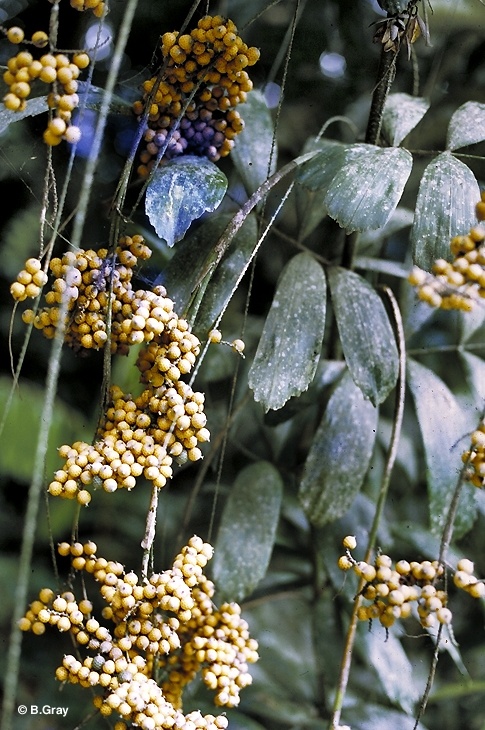
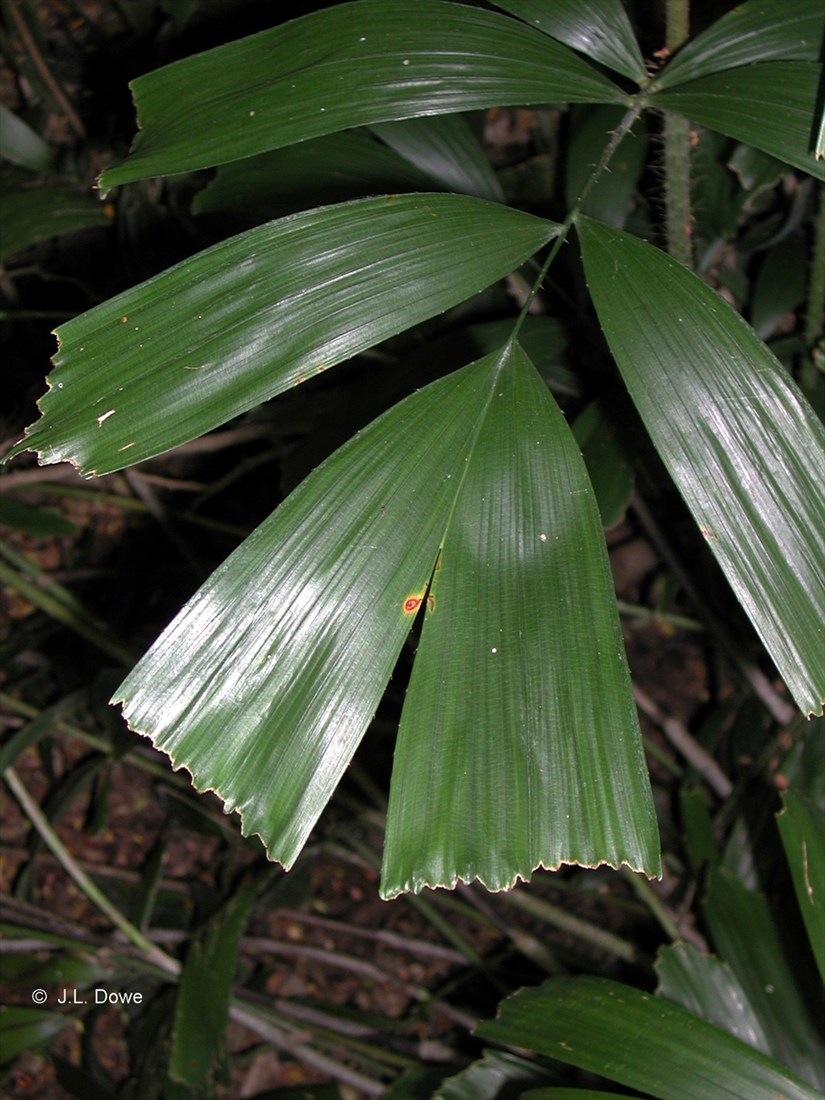
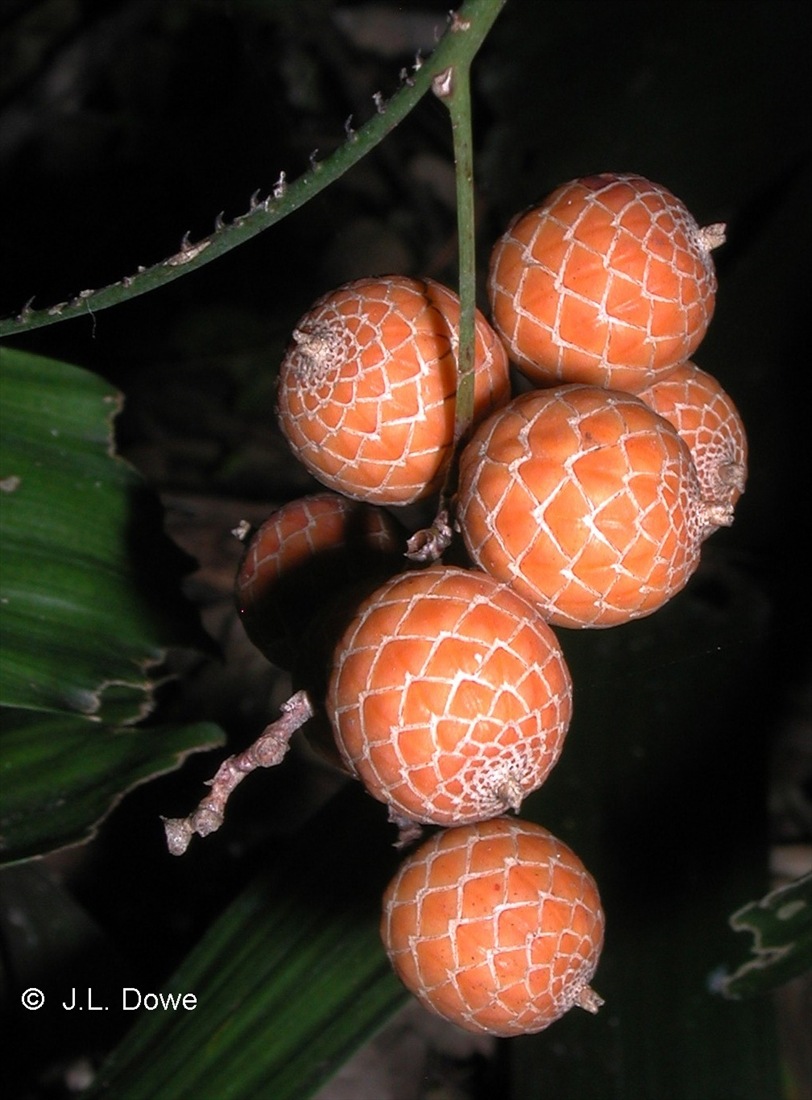



Martius, C.F.P. von (1853) Historia Naturalis Palmarum 3: 338. Type: Lectotype: vicinity of the Endeavour River, July 1820, voyage of the Mermaid commanded by P.P. King.
Cane, Fish-Tail Lawyer; Fish-Tail Lawyer Cane
A slender vine not exceeding a stem diameter of 2 cm. Vine stem smooth and glassy.
Leaflets 6-12 in each compound leaf, each leaflet with 3 prominent longitudinal veins. Leaflet blades sessile. Lateral leaflet blades about 12-16 x 2.3-3 cm. Terminal leaflet blade about 13 x 9 cm. Leaflet tips praemorse, leaflet blade margins minutely spiny. Terminal leaflet bilobed. Strong recurved hooks present on the underside of the compound leaf axis. Stems (or more correctly the compound leaf sheaths) densely clothed in long dark irritant spiny hairs. The apex of the sheathing base of the petiole extends above the point of attachment of the narrowed portion of the compound leaf petiole. Tendrils simple (unbranched(?)) +/- leaf-opposed, attached to the sheathing base of the compound leaf petiole.
Male flowers: Inflorescence a slender, pendulous, much-branched panicle. Flowers borne in two-ranked spikes, the individual flowers arranged in a single plane. Outer tepals about 2-2.5 x 1 mm. Inner tepals about 4 x 1 mm. Stamens 6. Female flowers: Inflorescence borne on the sheathing base opposite the compound leaf petiole. Flowers about 2 mm diam. Outer tepals fused to form a tube about 1.2 mm long, lobes about 0.9 mm long. Inner tepals free from one another, about 2.3 mm long. Staminodes about 1.5 mm long, anther bases sagittate. Base of the ovary clothed in small scales, while larger nectary glands are usually visible higher on the ovary. Stigmatic arms curved, about 1.5 mm long. Ovules usually one per locule.
Fruits globular, about 9-10 mm diam., borne near the end of a spiny tendril about 1 m long. Fruits clothed in numerous slightly overlapping shield-like or diamond-shaped scales arranged in a neat regular pattern. Seed surrounded by an acidic slightly astringent pulp. Seeds one per fruit, each seed globular, about 8 mm diam., flat on one side with a central cavity. Testa smooth. Embryo lateral, borne towards the edge of the endosperm, slightly above the equator. Embryo about 1.5 mm long, shaped like a bullet (i.e. 0.22 projectile).
One or two large sheathing cataphylls produced before the first true leaf. First true leaf pinnate with four to six narrowly elliptic leaflets or with four lateral leaflets plus a deeply divided terminal leaflet. Petioles and leaflets armed with spines about 2 mm long. At the tenth leaf stage: leaf compound with about four or five leaflets crowded on a short compound leaf axis. Compound leaf petiole arising from a spiny sheath around the stem of the seedling, spines about 3-5 mm long. Terminal leaflet deeply bilobed or an alternative explanation is that the compound leaf ends in two sessile leaflets. Leaflets longitudinally veined, margins spiny, apices praemorse.
Endemic to Queensland, occurs in CYP and NEQ. Altitudinal range from near sea level to 1500 m. Usually grows in the drier more seasonal rain forests and monsoon forest.
The slender canes of this species have been used in basket making. This plant used medicinally by Aborigines, young shoots eaten to cure headaches. Cribb (1981).
Distinguishing features: leaf not terminating in a cirrus (whip-like extension armed with spines); apex of pinnae truncate; leaf sheath armed with spines arranged randomly; leaflets without spines on upper surface veins.





